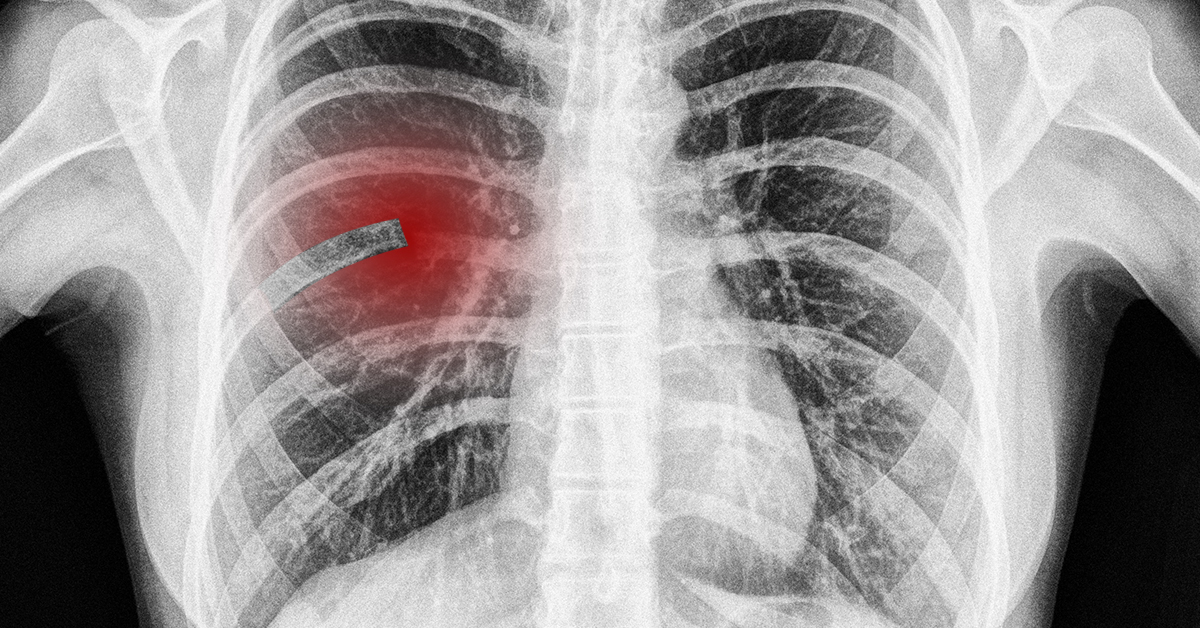
Fractures of the Ribs
The bones in our body are particularly vulnerable to injury and can break when the trauma is sufficiently forceful. The ribs are the bones that cover the thorax and protect the heart and the lungs. Unfortunately, under certain circumstances, the ribs may fracture. In this article we shall briefly review rib fractures and how they can be managed.
Causes of Rib Fractures
The most common cause of rib fracture is blunt trauma. This is often sustained due to some form of road traffic accident, physical assault or falls. In individuals who have lung disease, fierce coughing over prolonged periods of time can weaken the ribs and can result in fractures. Stress on the ribs due to sudden movements of the chest can also cause minor fractures.
Clinical Symptoms
Typically, patients have a background history of trauma when they present to the emergency department with a fracture. Upon taking a breath in, patients can experience chest discomfort. As a result, their breathing may become rather shallow and patients may become breathless.
Rib fractures do not have a particular predilection to where the fracture occurs. In other words, the fractures can occur on any rib depending on where the trauma takes place.
Upon examination, the patient will have a great deal of tenderness and pain over the area of the fracture. Sometimes a small amount of air may enter the space beneath the skin from the lungs, causing a 'crackling' sensation when the skin is pressed upon. In the event that multiple rib fractures have occurred, the chest wall tends to move inward when the patient takes a breath in (normally it moves outward). This is known as a paradoxical movement and the clinical condition is called a flail chest. Examinations will also reveal bleeding and bruising over the site of fracture.
Diagnosis
The best way to diagnose a rib fracture is through an X-ray of the chest. Specific views may be taken to visualize the rib structure. Further evaluation may be performed using a CT scan, though this is often not required unless there are complications.
Treatment
Initial management of rib fractures is done in the emergency department. The assessment of the patient's airway, breathing and circulation should be done first. Secondary surveys looking for fractures elsewhere must be conducted, especially if the patient has sustained injuries from a road traffic accident.
With regard to specific management of rib fractures, pain control is the first step forward. This can be achieved through simple painkillers or non-steroidal anti-inflammatory drugs. Some individuals might need more powerful medications such as narcotic painkillers, that is, something like morphine, which is offered to patients under controlled circumstances.
In individuals who have had a single rib fracture, in the absence of any underlying injury to the lungs or other structures, no specific treatment is required. However, in patients who had three or more rib fractures, admission to intensive care may be warranted. This is because rib fractures can be accompanied by complications such as accumulation of blood in the space surrounding the lung (called hemothorax) or excessive air in this same space (called pneumothorax). Injury to the lungs may also occur.
Conclusion
Rib fractures can occur following blunt trauma to the chest. Small fractures do not require specific treatment but multiple fractures may require admission to an intensive care unit and more aggressive management.




